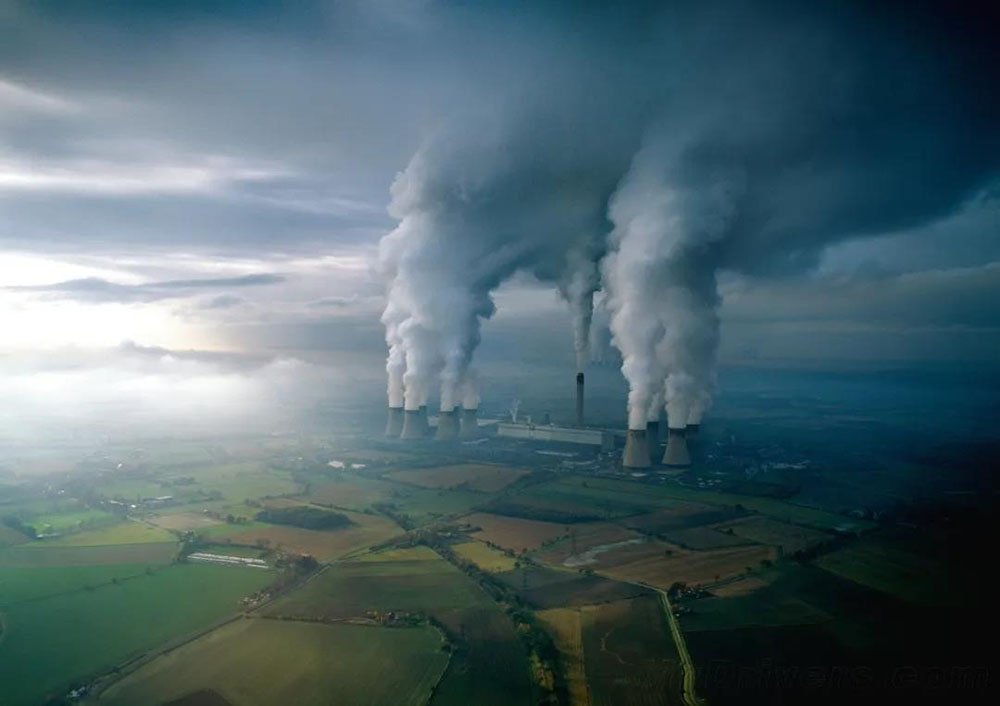VOCs monitoring management national and local policy requirements
Sep 24, 2021As an important precursor of PM2.5 and ozone, VOCs emit much higher than sulfur dioxide and nitrogen oxides, and are extremely harmful to the atmospheric environment and human health. With the deepening of our country's air control work, the control of VOCs pollution is very difficult. The results of the national air quality forecast consultation in the first half of September were announced: light to moderate ozone pollution may occur in the Yangtze River Delta, and the prevention and control of VOCs gas pollution is even more urgent. National policies for VOCs have been continuously introduced, and local governments have also intensively launched VOCs gas governance and monitoring policies and regulations.

(1) National level
In June 2010, the Ministry of Environmental Protection, the National Development and Reform Commission, the Ministry of Science and Technology, the Ministry of Industry and Information Technology, the Ministry of Finance, the Ministry of Housing and Urban-Rural Development, the Ministry of Transport, the Ministry of Commerce, and the Energy Administration jointly issued the "Regarding the Promotion of Joint Prevention and Control of Air Pollution" "Guiding Opinions on Improving Regional Air Quality", volatile organic compounds are listed as one of the four air pollutants that need key control.
In December 2011, the Ministry of Environmental Protection issued the "Twelfth Five-Year Development Plan for National Environmental Protection Standards", emphasizing the strengthening of the control of volatile organic pollutants and toxic waste gas, and officially proposed to control the emission of volatile organic pollutants, and clearly proposed to carry out volatilization. Monitoring of sexual organic pollutants.
In September 2013, the State Council issued the "Air Pollution Prevention and Control Action Plan" to promote the control of volatile organic compounds, increase the collection of pollution fees, and include volatile organic compounds in the scope of the collection of pollution fees.
In July 2014, the State Council’s "Measures for the Assessment of the Implementation of the Air Pollution Prevention and Control Action Plan (for Trial Implementation)" stipulated the progress of the national air volatile organic pollutants control. At this point, the treatment of atmospheric volatile organic pollutants has begun, and the monitoring has officially started.
In December 2014, the Ministry of Environmental Protection issued the "Comprehensive Remediation Plan for Volatile Organic Compounds in the Petrochemical Industry". By 2017, the national petrochemical industry has basically completed the comprehensive remediation of VOCs and established a VOCs monitoring and monitoring system. The total VOCs emissions will be reduced by more than 30% compared with 2014.

In June 2015, the Ministry of Environmental Protection issued the "Volatile Organic Pollutant Discharge Pilot Measures". Starting from October 1, 2015, the petrochemical, packaging and printing industries have carried out pilot work on volatile organic pollutant discharge charges. All provinces, autonomous regions, and municipalities directly under the Central Government can increase the pilot industries for VOCs pollution discharge according to the actual conditions of their regions, and formulate measures to increase the VOCs discharge charges for the pilot industries.
In August 2015, the Sixteenth Meeting of the Standing Committee of the Twelfth National People's Congress revised the Air Pollution Prevention and Control Law of the People's Republic of China for the second time and included VOCs in the scope of environmental supervision for the first time.
In November 2016, the State Council issued the "Thirteenth Five-Year Plan for Ecological Environmental Protection", which made specific regulations on the VOCs monitoring area, monitoring industry and time nodes. Require key regions and key industries to promote total volatile organic compound control, and reduce national emissions by more than 10%.
In January 2018, the Ministry of Environmental Protection issued the "Notice on Strengthening the Monitoring of Volatile Organic Compounds in Fixed Source Exhaust Gases", which made specific regulations on the VOCs monitoring area, monitoring industry and time nodes. Require key regions and key industries to carry out monitoring and reporting of volatile organic compounds.
In June 2019, the Ministry of Ecology and Environment issued the "Comprehensive Control Plan for Volatile Organic Compounds in Key Industries". By 2020, a VOCs pollution prevention and control system will be established and improved, and VOCs in key areas and industries will have achieved significant results, and the "13th Five-Year Plan" will be completed The determined target task of reducing VOCs emissions by 10%, coordinated control of greenhouse gas emissions, and promoted continuous improvement of ambient air quality.
In June 2020, the Ministry of Ecology and Environment issued the "2020 Volatile Organic Compounds Governance Tackling Plan", including the following plans: vigorously promote source substitution, effectively reduce the generation of VOCs; fully implement standard requirements, strengthen unorganized emission control; focus on pollution control facilities" "Three rates" to improve the efficiency of comprehensive management; deepen the renovation of parks and clusters to promote green development of the industry; strengthen supervision of oil storage, transportation and marketing to achieve pollution reduction, consumption reduction and efficiency; adhere to the combination of assistance and law enforcement to effectively improve supervision efficiency; improve monitoring and monitoring System, improve the level of precise governance; increase policy support and enhance corporate governance enthusiasm; strengthen publicity, education and guidance, and create a good atmosphere for universal governance; effectively strengthen organization and leadership, and strictly implement assessment and inspection.

In February 2021, the Ministry of Ecology and Environment announced the deployment of air pollution prevention and control work in 2021 and the "14th Five-Year Plan". The two indicators (sulfur dioxide and nitrogen oxides) required by the "13th Five-Year Plan" outline have basically reached the level of sulfur dioxide. To solve the problem, VOCs became a new indicator of the air pollution prevention plan during the 14th Five-Year Plan.
(2) Local level
Beijing: Since October 1, 2015, VOCs will be levied on pollutant discharge units in the five industries of petrochemical, automobile manufacturing, electronics, printing, and furniture manufacturing within the administrative region of this city.
Shanghai: In the first phase (from October 1, 2015), on the basis of the national pilot industries, increase the production of paint and ink, automobile manufacturing, shipbuilding, etc. as a pilot for volatile organic compounds discharge charges, involving a total of 5 categories, 13 In the second phase (since July 1, 2016), industrial coating, industrial coating and other industries will be added, involving 7 categories and 53 small and medium-sized industries; the third phase (since January 2017) Starting on the 1st) The furniture manufacturing, pharmaceutical manufacturing, and electronics industries will be increased, involving 12 major categories and 71 small and medium-sized industries, basically covering the key volatile organic compound emission industries in this city.
Jiangsu: Starting from January 1, 2016; Anhui: Starting from January 1, 2015; Hunan: Starting from March 1, 2016, pilot work on sewage charges for petrochemical, packaging and printing industries will be implemented.

Sichuan: Starting from March 1, 2016, pilot work on sewage charges for petrochemical, packaging and printing industries will be implemented.
Zhejiang: The scope of expropriation covers the two pilot industries of petrochemical industry and packaging and printing, which will be implemented from July 1, 2016.
Tianjin: implemented as of March 1, 2016;
Liaoning: Starting from April 1, 2016, it will be levied on a pilot basis in the petrochemical industry and packaging and printing industry.
Hebei: From January 1, 2016;
Shandong: Pollution charges will be implemented from June 1, 2016.
Hunan and Hubei: Pollution charges will be implemented from October 1, 2015.
Shanxi: Pollution charges will be implemented from September 1, 2016.
Xinjiang: A pilot levy for the petrochemical industry and packaging and printing industry will be implemented on October 1, 2017.

The "Environmental Protection Tax Law of the People's Republic of China" changed the current "pollutant discharge fee" to "environmental protection tax". Effective January 1, 2018, the current pollutant discharge fee will be used as the lower limit of the environmental protection tax. Pollution is taxed. Since the environmental protection tax was levied on January 1, 2018, China has successfully completed the smooth transition from pollution discharge fees to environmental protection taxes. The environmental protection tax has been levied smoothly for three years and has played an active role in promoting corporate pollution control. In December 2020, it was mentioned at a regular press conference held by the Ministry of Ecology and Environment that during the "14th Five-Year Plan" period, research into including VOCs in the scope of environmental protection tax collection.